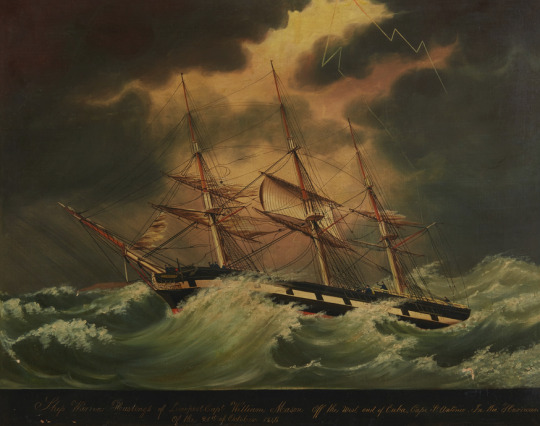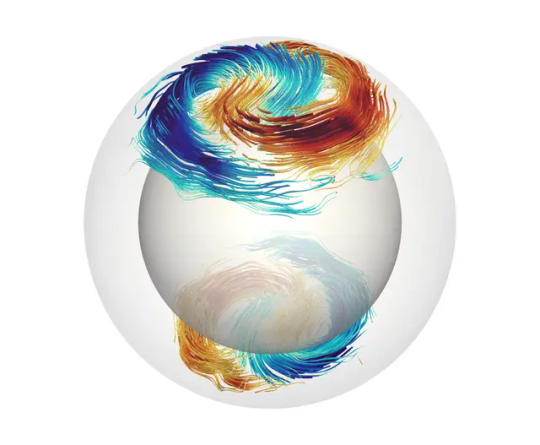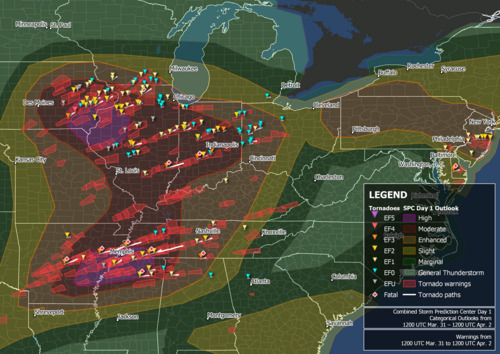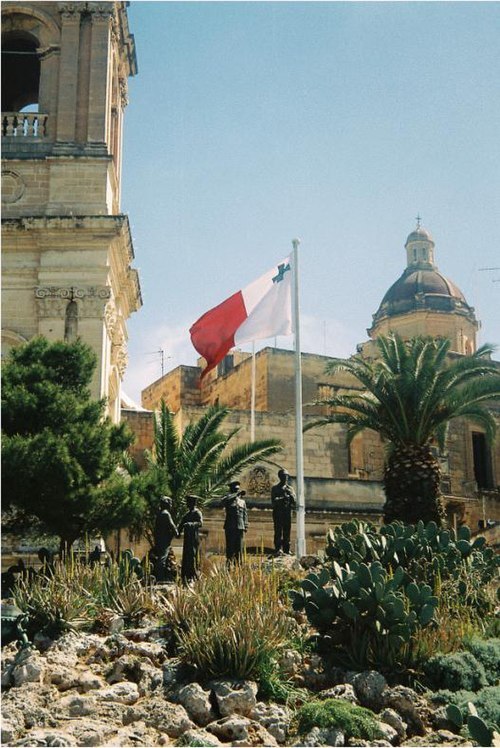#Extratropical cyclone
Text
#OTD in 1961 – Hurricane Debbie hits Ireland.
As early as 13 September, residents were made aware that a storm might strike parts of Ireland with hurricane-force winds. Two days later, forecasters believed the storm would take a more southerly course towards France. This forecast was later withdrawn as the storm failed to turn eastward. Consequently, gale warnings were issued for much of western Ireland on the morning of 16 September, hours…

View On WordPress
#Extratropical cyclone#Hurricane Debbie#Ireland#Irish History#Most intense storms on record#Powerful tropical#West Coast of Ireland
6 notes
·
View notes
Text
Cyclone Bomb Hits Southern Brazil in 2020
DOI:
https://doi.org/10.30564/jasr.v3i3.2163
Abstract
An “explosive extratropical cyclone” is an atmospheric phenomenon that occurs when there is a very rapid drop in central atmospheric pressure. This phenomenon, with its characteristic of rapidly lowering the pressure in its interior, generates very intense winds and for this reason it is called explosive cyclone, bomb cyclone. With gusts…

View On WordPress
#Atmospheric phenomenon#Brazil#Chapecó#Cyclone Bomb#Extratropical cyclone#Parana#Rio Grande do Sul#Santa Catarina
0 notes
Text
Climate change in Brazil be like…

This past weekend served as a stark reminder that while Brazil may not often face colossal natural disasters — especially compared to its neighbors or the Caribbean nations — Mother Nature still has subtle ways of asserting her dominance around these parts. And the textbook examples of the effects of climate change have taken place in São Paulo and Rio de Janeiro, Brazil’s two largest cities, where the populations face contrasting climate-related challenges.
On the one hand, São Paulo experienced a week of power outages caused by heavy storms and strong winds, disrupting the city’s usual hustle and bustle. Some people went without power for more than four days, causing huge economic losses to households and businesses.
Meanwhile, Rio de Janeiro faced an unexpected encroachment of large waves that inundated the coast and caught beachgoers off guard. The situation stemmed from an extratropical cyclone in the ocean that pushed winds toward the region and prompted the Brazilian Navy to warn of waves in excess of 3.5 meters!
Continue reading.
#brazil#brazilian politics#politics#environmentalism#environmental justice#mod nise da silveira#image description in alt
77 notes
·
View notes
Photo

Ship Warren Hastings off the West Coast of Cuba in the Hurricane of 21 October 1846, by unknown
Known as the Great Havana Hurricane in 1846, it hit western Cuba with the intensity of a category 5 hurricane, destroying over 85 merchant ships and almost all the buildings in Havana and claiming over 200 lives in its wake. On its way north, the storm turned into an extratropical cyclone that wreaked havoc on the east coast of the United States.
79 notes
·
View notes
Note
Hey Ani! If I remember correctly, you’re hella knowledgeable about weather, right? If I am remembering that correctly, can I ask you a question about something?
(I’ve heard the Bering Sea has a lot of “hurricane force winds”. How can you have those conditions but not a “hurricane” (is there a cold water equivalent?) even when there’s a storm?)
If I’m mistaking you for someone else, I am. So sorry 😅 please ignore me.
But if you are, and you’re up for answering, I’m so intrigued 🖤
Either way, hope you’re doing well 🖤
AAAAAH this ask made me flail and geek out, thank youuuu~ also, this is a fantastic question. *cracks knuckles* Brace yourself for a very happy scientist's ramblings!
Hokay, so the atmosphere would prefer to be in balance. But land heats up/cools down faster than water, places closer to the equator (low latitudes) tend to be warmer than places farther away (high latitudes), and some places are super dry (like deserts) while others are really moist (like rainforests). Temperature and moisture differences such as these affect atmospheric pressure, and pressure imbalances produce winds because air moves toward low pressure and away from high pressure, though not necessarily directly from one to the other due to other factors like friction.
Hurricanes are low-pressure systems that form over tropical oceans and are "powered" by thunderstorms (which are also known as "deep convection" because they're made up of very tall convective clouds, a.k.a. thunderstorms). Those clouds get their energy from warm ocean water and help form the low pressure around which the winds spin. The Saffir-Simpson hurricane wind scale (SSHWS) is the scale by which we categorize hurricanes, specifically by their maximum surface winds averaged over a 1-minute period. (Such winds tend to be highest over the ocean; for example, a landfalling category 1 hurricane may never produce hurricane-force winds over land due to increased friction from the land slowing down the winds. But that's a ramble for another time.)
Generally speaking, a hurricane is a type of "tropical cyclone." When a tropical cyclone in the North Atlantic or eastern North Pacific has maximum winds of 39-73 mph, it's a tropical storm, and reaching a maximum wind of 74+ mph makes it a hurricane. This means 74 mph is the hurricane-force wind threshold.
Extratropical storms are also low-pressure systems, but instead of forming over warm ocean water and being powered by thunderstorms, they result from the collision of warm and cold air masses at higher latitudes (hence the term "extratropical" meaning "beyond the tropics"). The warm air masses often come from the tropics, which makes them juicy too (that is, they carry a lot of moisture with them). The cold air masses tend to be drier, increasing the contrast between the two. Since continents are often the source of the cold + dry air, extratropical storms can develop over ocean or over land!
Strong extratropical storms can produce surface winds that exceed 74 mph, which earns them the moniker "hurricane-force low" because that's the SSHWS threshold for a hurricane. On a weather map, they'll get a label when they reach this intensity, like this storm south of Alaska in early October 2021:


Visible satellite image source (NASA Worldview)
Surface analysis map is from the Ocean Prediction Center
For more information, this ArcGIS StoryMap from the Ocean Prediction Center nicely discusses hurricane-force lows that occurred during Spring 2021-Spring 2022 in the Northern Hemisphere.
I hope this ramble clarified a bit about these storms! Thanks again for sending the ask -- I loved diving into the answer.
#Ani's science rambles#long post#alas the pretty satellite image is near the bottom so you'll have to scroll to find it#I linked to a small subset of readily-available online resources but there's so much more out there I could include
10 notes
·
View notes
Text
Brazil was hit with an extremely powerful extratropical cyclone, Europe was smashed with a massive mesocyclonic system from the Mediterranean (which is also hitting record temperatures) which delivered some of the only rain Europe has received this year. China was flooded by historic rains from Typhoon Doksuri. Greece continues to burn as wildfires continue across Southern Europe and Northern Africa. Italy was hit with record-breaking hailstorms twice. North, South, and Central America have been hit by heatwave after heatwave, with average regional temperatures going as high as 10 degrees Celsius over previous yearly averages. Life threatening temperatures. Sea temperatures in the Caribbean and Central America are comparable to a hot tub, reaching the 90s for prolonged periods, which is unheard of. North American flights are forced to limit fuel and passengers to continue flying safely during severe heatwaves. The polar ice is failing in new and unexpected ways. The whole world is boiling or burning.
28 notes
·
View notes
Text

Long-period oscillations control the Sun’s differential rotation
The interior of the Sun does not rotate at the same rate at all latitudes. The physical origin of this differential rotation is not fully understood. A team of scientists at the Max Planck Institute for Solar System Research (MPS) in Germany has made a ground-breaking discovery. As the team reports today in the journal Science Advances, the long-period solar oscillations discovered by MPS scientists in 2021 play a crucial role in controlling the Sun’s rotational pattern. The long-period oscillations are analogous to the baroclinically unstable waves in Earth’s atmosphere that shape the weather. In the Sun, these oscillations carry heat from the slightly hotter poles to the slightly cooler equator. To obtain their new results, the scientists interpreted observations from NASA’s Solar Dynamics Observatory using cutting-edge numerical simulations of the solar interior. They found that the difference in temperature between the poles and the equator is about seven degrees.
The Sun’s differential rotation pattern has puzzled scientists for decades: while the poles rotate with a period of approximately 34 days, mid-latitudes rotate faster and the equatorial region requires only approximately 24 days for a full rotation. In addition, in past years advances in helioseismology, i.e. probing the solar interior with the help of solar acoustic waves, have established that this rotational profile is nearly constant throughout the entire convection zone. This layer of the Sun stretches from a depth of approximately 200 000 kilometers to the visible solar surface and is home to violent upheavals of hot plasma which play a crucial role in driving solar magnetism and activity.
While theoretical models have long postulated a slight temperature difference between solar poles and equator to maintain the Sun’s rotational pattern, it has proven notoriously difficult to measure. After all, observations have to “look through” the background of the Sun’s deep interior which measures up to million degrees in temperature. However, as the researchers from MPS show, it is now possible to determine the temperature difference from the observations of the long-period oscillations of the Sun.
In their analysis of observational data obtained by the Helioseismic and Magnetic Imager (HMI) onboard NASA’s Solar Dynamics Observatory from 2017 to 2021, the scientists turned to global solar oscillations with long periods that can be discerned as swirling motions at the solar surface. Scientists from MPS reported their discovery of these inertial oscillations three years ago. Among these observed modes, the high-latitude modes with velocities of up to 70 km per hour, proved to be especially influential.
To study the nonlinear nature of these high-latitude oscillations, a set of three-dimensional numerical simulations was conducted. In their simulations, the high-latitude oscillations carry heat from the solar poles to the equator, which limits the temperature difference between the Sun’s poles and the equator to less than seven degrees. “This very small temperature difference between the poles and the equator controls the angular momentum balance in the Sun and thus is an important feedback mechanism for the Sun’s global dynamics” says MPS Director Prof. Dr. Laurent Gizon.
In their simulations, the researchers for the first time described the crucial processes in a fully three-dimensional model. Former endeavors had been limited to two-dimensional approaches that assumed the symmetry about the Sun’s rotation axis. “Matching the nonlinear simulations to the observations allowed us to understand the physics of the long-period oscillations and their role in controlling the Sun’s differential rotation”, says MPS postdoc and the lead author of the study, Dr. Yuto Bekki.
The solar high-latitude oscillations are driven by a temperature gradient in a similar way to extratropical cyclones on the Earth. The physics is similar, though the details are different: “In the Sun, the solar pole is about seven degrees hotter than equator and this is enough to drive flows of about 70 kilometers per hour over a large fraction of the Sun. The process is somewhat similar to the driving of cyclones”, says MPS scientist Dr. Robert Cameron.
Probing the physics of the Sun’s deep interior is difficult. This study is important as it shows that the long-period oscillations of the Sun are not only useful probes of the solar interior, but that they play an active role in the way the Sun works. Future work, which will be carried out in the context of the ERC Synergy Grant WHOLESUN and the DFG Collaborative Research Center 1456 Mathematics of Experiments, will be aimed at better understanding the role of these oscillations and their diagnostic potential.
IMAGE....Three-dimensional visualization of the high-latitude oscillations in the Sun. Snapshot of streamlines of the long-period high-latitude oscillations in the convection zone. The red and blue colors denote the prograde (same as rotation) and retrograde (opposite to rotation) zonal flows, respectively. © MPS / Y. Bekki
2 notes
·
View notes
Text
so there’s an extratropical cyclone passing through my state tonight, it rained all day long and now is so windy like VERY VERY WINDY im like 😮💨😮💨😮💨 tho i know nothing too serious will happen in my city (i pray) it’s scary anyway
4 notes
·
View notes
Text
i cant believe this shit. i might not be able to watch the guapo duo wedding since theres a extratropical cyclone going on theyre nerfing me
6 notes
·
View notes
Text
I meant to go to sleep an hour and a half ago, but I started down the researching tropical cyclones, tropical depressions, tropicals storms, hurricanes, and extratropical cyclones rabbit hole again oops--
#and I'd do it again kdoajduw#this time I started with the labor day hurricane of 1935 and cat 5 storms in general :>#and I ended with hurricane sandy like I normally do gkwkkdkske#listen I basically got a week off from school and my dad's power was out for almost a month that year#got lucky at my mom's and our power came back after 3 days iirc?#legit my mom had my sister and I pack up to go stay with our aunt since her house had power and we all went out to dinner#cause some places in the town over got power back and the grocery store was still out#and when we got back to my aunt's and my mom said bye to my sister and I to go keep an eye on the house#we got a very very excited phone call of “THE POWER IS BACK OH MY GOD THE POWER CAME BACK A WEEK EARLY”#my dad though yeesh he was living off a generator for a month bro#he got cable and internet back before his fucking power (he had the TV and router hooked up to the generator for the news)#and my god I was so sad that Halloween got canceled that year#but the gov of my state rescheduled Halloween#like ngl I could go on for hours about hurricane sandy in particular especially the logistics of it and my personal experience#oh and irene! hurricane irene also sucked!!!#bless pokemon black and white for getting me through the night the storm hit /lh#data log: personal#what can I say I fucking love weather and in particular tropical storm systems
5 notes
·
View notes
Text

Coastal cottages in Northern California during an atmospheric river storm that formed an extratropical cyclone on January 9, 2023
2 notes
·
View notes
Text
#OTD in 1961 – Hurricane Debbie hits Ireland.
#OTD in 1961 – Hurricane Debbie hits Ireland.
As early as 13 September, residents were made aware that a storm might strike parts of Ireland with hurricane-force winds. Two days later, forecasters believed the storm would take a more southerly course towards France. This forecast was later withdrawn as the storm failed to turn eastward. Consequently, gale warnings were issued for much of western Ireland on the morning of 16 September, hours…

View On WordPress
#Extratropical cyclone#Hurricane Debbie#Ireland#Irish History#Most intense storms on record#Powerful tropical#West Coast of Ireland
5 notes
·
View notes
Text
my city: [the epicenter of a literal extratropical cyclone with rain falling non-stop and winds of over 140km/h during the night, electricity still out almost everywhere, mayor telling people to stay tf home]
my employer: after the passage of heavy rain over the state in the evening, we are returning to normal activities in the office today at noon.
1 note
·
View note
Text
Brazil’s south braces for another storm after facing deadly cyclone last week

Just days after facing a deadly cyclone that killed at least 41 people in the southern region, Brazil is bracing for another storm.
According to officials, the extratropical cyclone that descended upon the state of Rio Grande do Sul, left behind a trail of destruction, with 25 people still unaccounted for.
What’s concerning is that the new storm is also expected to hit the country’s south only, which could very well exacerbate the crisis and drive the death toll higher.
Late Thursday, “a cold front will advance along the border with Uruguay and will reinforce instabilities in the southern regions of the state, expanding to northern areas between Thursday night and early Friday,” according to a warning from the state government, citing a meteorologist.
Continue reading.
#brazil#politics#brazilian politics#environmentalism#environmental justice#mod nise da silveira#image description in alt
16 notes
·
View notes
Text

I forgot I took this screenshot the other day and wanted to say that I don’t think I’ve ever seen a more perfect extratropical cyclone
it’s just so nice! so clear, so organized
2 notes
·
View notes
Text
On this day in Wikipedia: Sunday, 31st March
Welcome, tervetuloa, ողջու՜յն (voġčuyn), добредојде (dobredojde) 🤗
What does @Wikipedia say about 31st March through the years 🏛️📜🗓️?

31st March 2023 🗓️ : Event - Tornado outbreak of March 31 – April 1, 2023
A historic tornado outbreak occurs in the Midwest and the northern South
"A widespread, deadly, and historic tornado outbreak affected large portions of the Midwestern, Southern and Eastern United States on the last day of March and the first of April, the result of an extratropical cyclone that also produced blizzard conditions in the Upper Midwest. The Storm Prediction..."

Image licensed under CC BY-SA 4.0? by Wxtrackercody
31st March 2019 🗓️ : Death - Nipsey Hussle
Nipsey Hussle, American rapper (b. 1985)
"Ermias Joseph Asghedom (August 15, 1985 – March 31, 2019; born Airmiess Joseph Asghedom), known professionally as Nipsey Hussle (often stylized as Nipsey Hu$le), was an American rapper, entrepreneur, and activist. Emerging from the West Coast hip hop scene in the mid-2000s, Hussle independently..."

Image licensed under CC BY 2.5? by Soundtrack Beat Battle
31st March 2014 🗓️ : Death - Gonzalo Anes
Gonzalo Anes, Spanish economist, historian, and academic (b. 1931)
"Gonzalo Anes Álvarez de Castrillón (10 December 1931 – 31 March 2014) was a Spanish economist, professor and historian. He was director of the Royal Academy of History. He was born in Trelles, Coaña, Asturias, and died on 31 March 2014 in Madrid...."

Image licensed under CC BY-SA 3.0? by FDV
31st March 1974 🗓️ : Birth - Benjamin Eicher
Benjamin Eicher, German director, producer, and screenwriter
"Benjamin Eicher (born 31 March 1974 in Tübingen, Germany) is a film director famous for his cult film sequel Dei Mudder Sei Gesicht II and further feature-length gangster comedies. His company Los Banditos Films, founded in 2000 together with Timo Joh. Mayer, produces controversial movies with..."

Image licensed under CC BY-SA 3.0 de? by Shirley Karnowski
31st March 1924 🗓️ : Birth - Leo Buscaglia
Leo Buscaglia, American author and academic (d. 1998)
"Felice Leonardo Buscaglia (March 31, 1924 – June 12, 1998), also known as "Dr. Love", was an American author, motivational speaker, and a professor in the Department of Special Education at the University of Southern California...."

Image licensed under CC BY 2.0? by Alan Light
31st March 1823 🗓️ : Birth - Mary Boykin Chesnut
Mary Boykin Chesnut, American author (d. 1886)
"Mary Boykin Chesnut (née Miller; March 31, 1823 – November 22, 1886) was an American writer noted for a book published as her Civil War diary, a "vivid picture of a society in the throes of its life-and-death struggle." She described the war from within her upper-class circles of Southern slaveowner..."

Image by unknown/uncredited
31st March 🗓️ : Holiday - Freedom Day (Malta)
"Freedom Day (Maltese: Jum il-Ħelsien) is a Maltese national holiday celebrated annually on 31 March. This is the anniversary of the withdrawal of British troops and the Royal Navy from Malta in 1979. On taking power in 1971, the Labour Government indicated it wanted to re-negotiate the lease..."

Image by Picman
0 notes